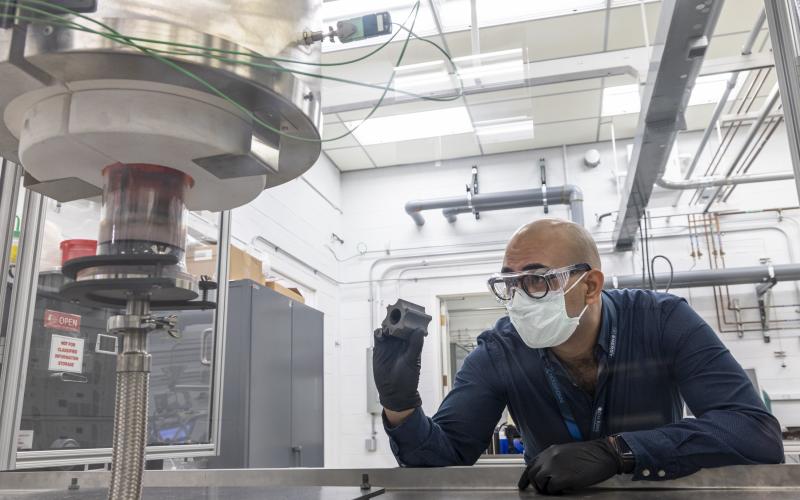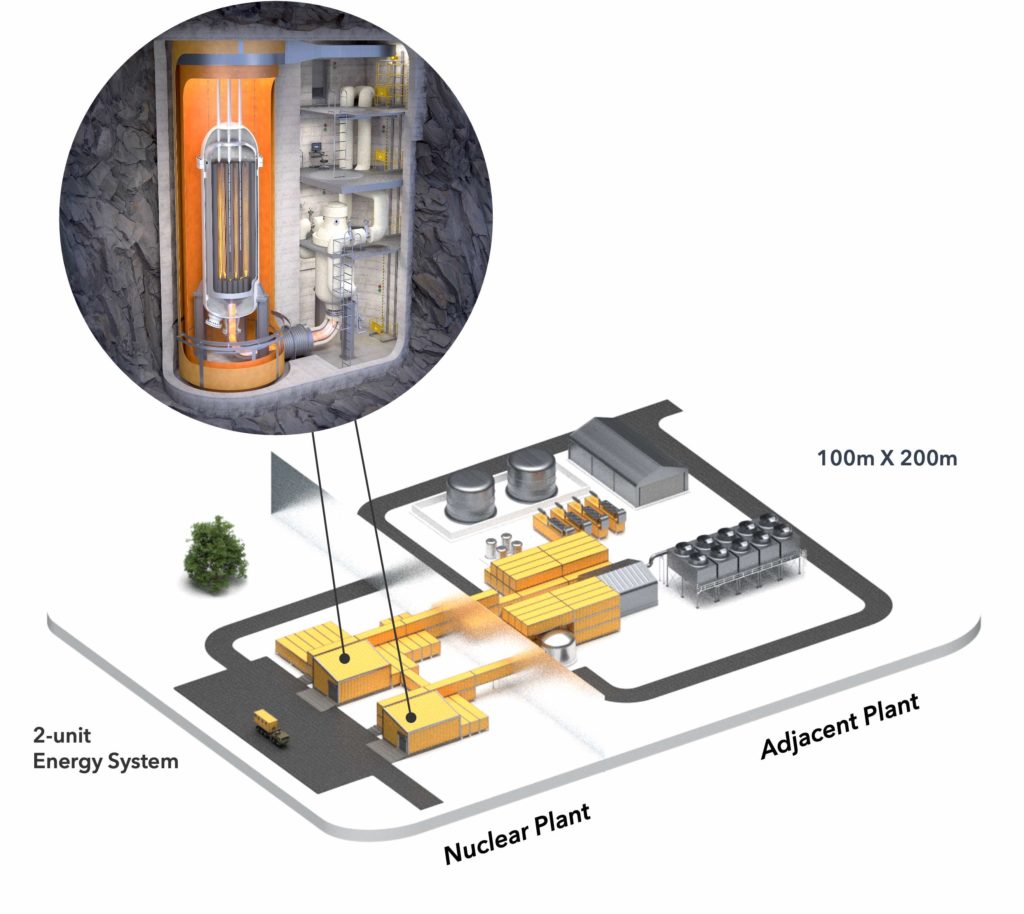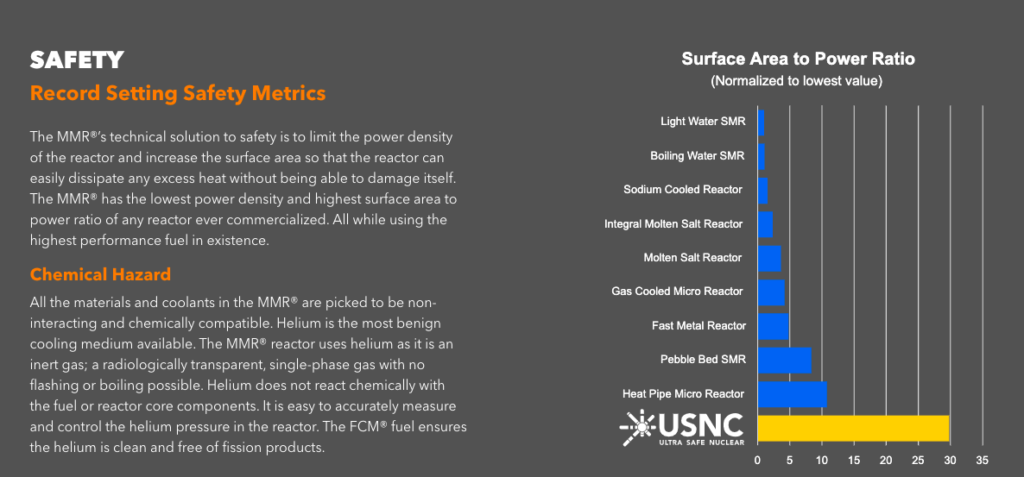The U.S. Department of Energy’s Oak Ridge National Laboratory (ORNL) has been making significant progress in 3D printing parts for use in one of the most volatile and dangerous environments: inside of nuclear reactors. Now that the lab has demonstrated its capabilities for this high-performance environment, it’s ready to pass the technology onto licensees. In this case, the Ultra Safe Nuclear Corporation (USNC) has licensed ORNL’s novel method for 3D printing components for nuclear reactors to incorporate the technology into its manufacturing operations.
In March 2021, ORNL announced that, with BWX Technologies, it had developed a unique method for 3D printing refractory metals using electron beam melting (EBM). These materials, which include tungsten, rhenium, and niobutin, are unique in their ability to survive extremely high temperatures. This makes them very difficult to shape, but additive manufacturing has opened up new possibilities that may prove useful in such specialty applications as nuclear power and even nuclear-powered rocket propulsion. In the case of its BWX project, ORNL 3D printed core structural parts used in nuclear thermal propulsion from the refractory metal molybdenum.

Ultra Safe Nuclear Corporation has licensed a novel method to 3D print highly resistant components for use in nuclear reactor designs. USNC Executive Vice President Kurt Terrani, formerly of ORNL, said the novel method will allow the company to make parts with desired complex shapes more efficiently. Credit: Carlos Jones/ORNL, U.S. Dept. of Energy
However, USNC will be 3D printing not with a metal, but a ceramic material that is key to the company’s reactor design: silicon carbide, a radiation-tolerant and heat-resistant ceramic that USNC uses to encapsulate its nuclear fuel. And rather than rely on EBM, it will be using a 3D printing technology that combines binder jet with chemical vapor infiltration. This makes it possible to produce parts with complex geometries, such as a heat exchangers with fluid channels.
USNC will now adopt ORNL’s process to 3D print geometrically complex parts for its nuclear reactors. The Seattle company, which has offices in Canada, South Africa, Europe/U.K., and South Korea, was founded in 2011 with the goal of developing small, modular nuclear reactors. This resulted in the firm’s Micro Modular Reactor (MMR), which USNC claims to be remarkably safer than traditional nuclear power reactors due in part to the fact that its nuclear fuel is encased in silicon carbide ceramic and that cooling is performed by helium gas.

Image courtesy of USNC.
As USNC has begun licensing its technology in the U.S. and Canada and expects first demonstration units to begin supplying power in 2024. The first project will see USNC and Ontario Power Generation demonstrate MMR technology at Atomic Energy of Canada Limited’s Chalk River Laboratories campus in Ontario, Canada. The company envisions its MMRs as acting as sources of nuclear energy that can also back up renewable infrastructure for when the sun doesn’t shine or the wind doesn’t blow. With 5 – 10 MWe of electric power and 15-30 MWth of thermal power, MMRs are thought to be deployable as series of reactors linked together.
To fully leverage ORNL’s expertise in scaling up the production of its parts, USNC will be expanding its operations into East Tennessee, where the government lab is located. There, the firm will open its new Pilot Fuel Manufacturing, where the former K-25 plant was once located not far from ORNL’s main campus.

Among its team members is Kurt Terrani, USNC executive vice president, who came from ORNL itself as technical director of the lab’s Transformational Challenge Reactor program. Additionally, ORNL researchers Brian Jolly and Michael Trammel, who helped to develop the 3D printing process, are joining USNC as group leaders for Chemical Vapor Processing and Additive Manufacturing. This process is facilitated through ORNL’s entrepreneurial leave program.
Of the AM process, Terrani said, “This technology is ideal for manufacturing structure and core components for USNC’s advanced reactor designs.” He added, “This is the holy grail of additive, that you can do things faster, that are in geometries that were previously very difficult or impossible with conventional manufacturing methods.”
The relationship between ORNL and USNC here demonstrates a significant step forward for both parties in an increasingly active field. In 2017, Siemens installed a 3D printed part in a nuclear reactor, which pushed Westinghouse to pursue a similar initiative. In Russia, RusAT, a subsidiary of the Russian State Atomic Energy Corporation Rosatom, is exploring the use of 3D printing for nuclear power parts. And, with French nuclear company Framatome, ORNL demonstrated the capabilities of a 3D printed nuclear reactor part. While ORNL continues to work closely with Framatome, its partnership with USNC is seeing multiple members of staff head over to the nuclear startup, potentially giving it a leg up on the competition.
Interestingly, something that USNC does have in common with the aforementioned BWX Technologies is that it is also pursuing nuclear propulsion. So, perhaps we will see some more overlap between all of the companies moving forward. Either way, it’s obvious that both nuclear power on Earth and in space using USNC technology will take some more time to develop before we see initial implementation.
Subscribe to Our Email Newsletter
Stay up-to-date on all the latest news from the 3D printing industry and receive information and offers from third party vendors.
Print Services
Upload your 3D Models and get them printed quickly and efficiently.
You May Also Like
Heating Up: 3D Systems’ Scott Green Discusses 3D Printing’s Potential in the Data Center Industry
The relentless rise of NVIDIA, the steadily increasing pledges of major private and public investments in national infrastructure projects around the world, and the general cultural obsession with AI have...
Formlabs Teams Up with DMG MORI in Japan
In late June, Nick Graham, Chief Revenue Officer at Formlabs, announced on LinkedIn that the company had partnered with DMG MORI, one of the world’s leading machine tool companies, to...
EOS in India: AM’s Rising Star
EOS is doubling down on India. With a growing base of aerospace startups, new government policies, and a massive engineering workforce, India is quickly becoming one of the most important...
3D Printing News Briefs, June 25, 2025: R&D Materials, 3D Printed Veneers, & More
In today’s 3D Printing News Briefs, 3DXTECH has launched a program that gives customers early access to experimental materials, and the first Lithoz CeraFab Multi 2M30 in the Czech Republic...



































